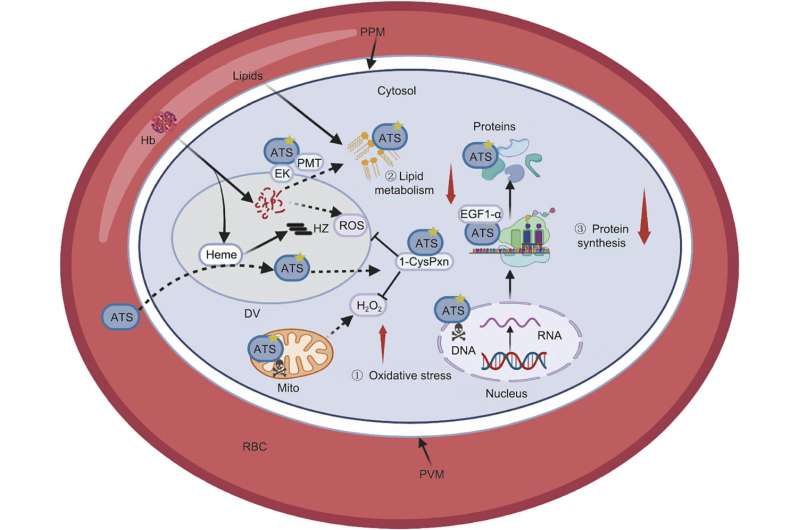This article has been reviewed according to Science X's editorial process and policies. Editors have highlighted the following attributes while ensuring the content's credibility:
fact-checked
proofread
Profiling artemisinin's antimalarial mechanism: Research team reveals crucial target proteins

Jigang Wang and colleagues have made significant progress in unraveling the antimalarial mechanisms of artemisinin (ART) and its derivatives. Their latest research, published in the journal Engineering, sheds light on the crucial target proteins and pathways of ART, providing valuable insights into combating malaria and addressing emerging ART resistance.
Malaria continues to pose a serious threat to global health, despite the widespread use of ART and its derivatives, which have significantly reduced the global burden of the disease. To address this ongoing challenge, it is crucial to understand the exact antimalarial mechanisms of ART. The research team utilized a combined strategy involving mass spectrometry-coupled cellular thermal shift assay (MS-CETSA) and transcriptomics profiling to identify a group of putative antimalarial targets of ART.
By employing MS-CETSA, the team identified potential antimalarial targets of ART based on the principle that drug binding events affect the thermal stability of the targeting proteins. The results were then combined with transcriptomic analysis to determine the critical antimalarial target proteins and corresponding causal pathways. Subsequent validation experiments on five prospective protein targets revealed that ART may function against malaria parasites by interfering with redox homeostasis, lipid metabolism, and protein synthesis processes.
"These findings provide fresh perspectives on the antimalarial mechanisms of ART and offer crucial insights into several proteins involved in parasite survival that can be targeted to combat malaria," said Jiaming Wu, the editor of the Engineering. "With signs of emerging ART resistance observed in some regions, understanding the exact mechanisms of ART is of utmost importance."
Artemisinin and its derivatives are currently the cornerstone drugs of malaria therapy. However, the emergence and spread of ART resistance underscore the need for greater knowledge of its antimalarial mechanism. The identification of critical targets and pathways serves as a stepping stone for the rational optimization of existing artemisinin-based combination therapies (ACTs) and the development of strategies to alleviate ART resistance.
The research not only clarifies the antimalarial mechanism of ART but also establishes potential methodologies for mechanistic studies of other antimalarial drugs. These findings will contribute to the ongoing efforts to combat malaria and improve global health outcomes.
More information: Peng Gao et al, Profiling the Antimalarial Mechanism of Artemisinin by Identifying Crucial Target Proteins, Engineering (2023). DOI: 10.1016/j.eng.2023.06.001
Provided by Engineering



















